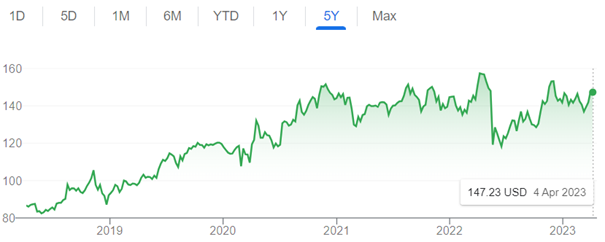The first article said that Walmart is holding a two-day event for investors to showcase their investments in their supply chain network, future growth opportunities, and high-value initiatives. They have also restated their financial guidance for the first quarter of 2024 and the full year of 2024. The company predicts a consolidated net sales growth of 4.5%-5.0% for Q1/24 and 2.5%-3.0% for the full year. They also expect Walmart U.S. comp sales growth of 2.0%-2.5% (ex. Fuel) and adjusted EPS of 5.90 USD - 6.05 USD for the full year. I think that is very ambitious and positive news about them. I continued with the article, which read that Walmart's CEO, Doug McMillon, stated that the company will focus on productivity advancements and capital prioritization to improve its operating margin and drive returns as it grows. [1] Amazing news, however, nothing shocking, as Walmart is a store with experience and proven history. In my eyes, they have always aimed to be better. And that did not change now. That is also one of the reasons that they are the world’s largest retailer by sales and are operating more than 5000 stores across the US. I jumped to the second article.
During its annual investor meeting in Tampa, Florida, Walmart has announced plans to have roughly 65% of its stores serviced by automation by the end of its fiscal year 2026. The move is part of the company's efforts to speed up order processing at its e-commerce fulfilment facilities and handle online-order deliveries through its large stores. The company has stated that the shift to automation is expected to reduce the need for lower-paid roles and create new roles that require less physical labour but offer a higher rate of pay. By January 2026, approximately 55% of packages processed through Walmart's fulfilment centres will be moved through automated facilities, resulting in an improvement of unit cost averages by about 20%. Another great news, which investors like me like. The reason is that company will save much money through the reorganization.
Despite fundamental analysis being great, technical was not so much promising. The price of a stock in the last five years grew from around 80 USD to the highest point of almost 160 USD.* However, in the last two years, price of a stock was constantly moving between 120 and 160 USD.* Despite this, I have decided to buy some stocks of the company immediately when market opens.

Movement of Walmart stocks in the last five years. (Source: Google Finance) *
* Past performance Is no guarantee of future results.
[1] Forward-looking statements are based on assumptions and current expectations, which may be inaccurate, or based on the current economic environment which is subject to change. Such statements are not guaranteeing of future performance. They involve risks and other uncertainties which are difficult to predict. Results could differ materially from those expressed or implied in any forward-looking statements.








